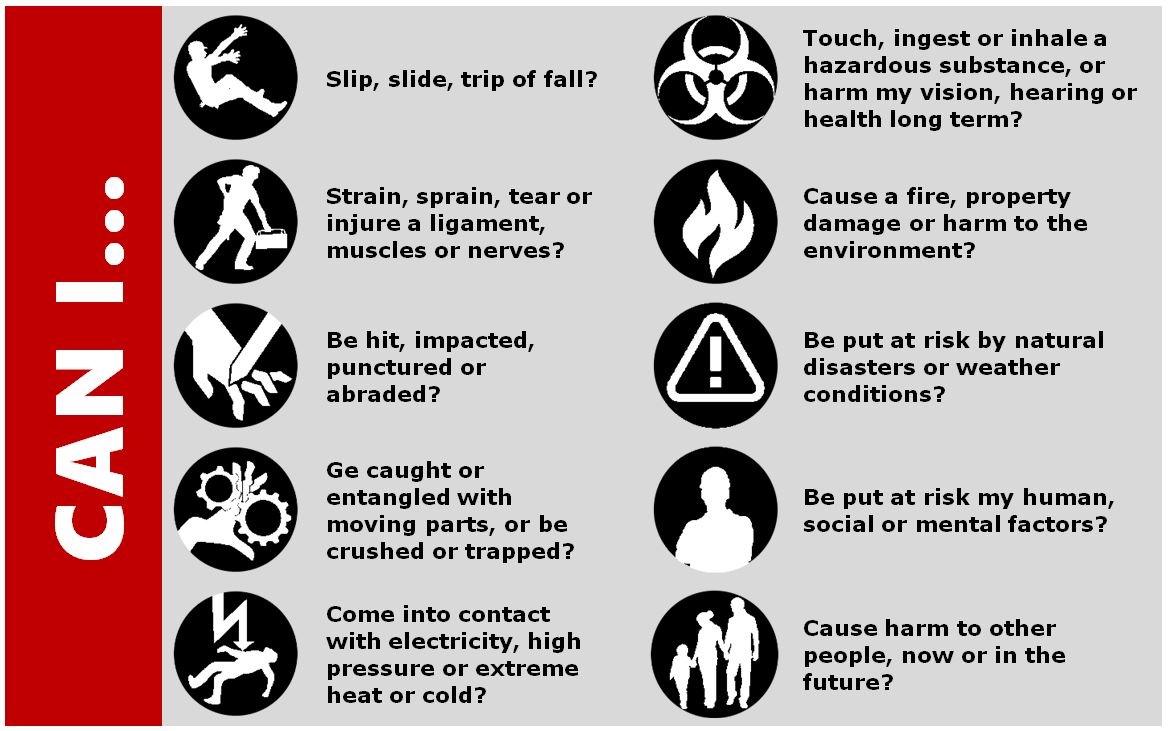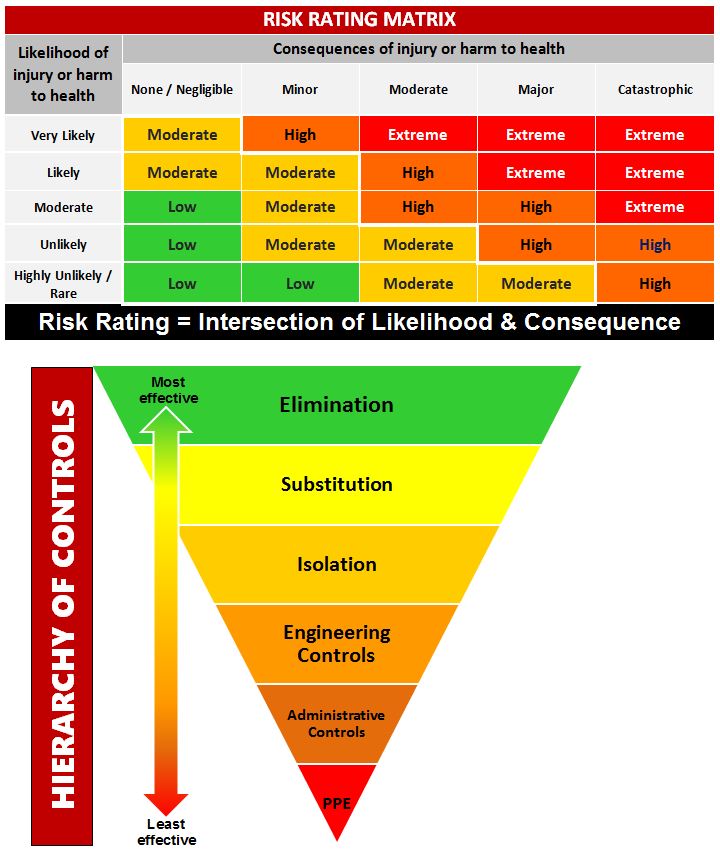Title Page
-
Site name/address
-
Description of task
-
Document No.
-
Principal Contractor/Client
-
Completed on
-
Form completed by
-
Location
-
TDE workers on site
Task Planning
TASK PLANNING
-
What equipment is required for the task?
- Air pressure test equipment
- Compactor
- Compressor
- Crane
- Excavator/s and attachments
- Hand tools
- H2O Truck / Trailer
- Power tools (saws, grinders concrete breaker etc.)
- Truck/s
- Water pressure test equipment
- Wheelbarrow
- No equipment is required today
- Other (add to comments)
-
What PPE is required for the task?
- Boot covers or slip on boots only (asbestos work)
- Chemical resistant gloves
- Disposable coveralls
- Disposable mask
- Full face respirator
- Full face shield
- Half face respirator
- Hard hat
- Hearing protection
- Heavy duty gloves
- High viz
- Safety boots
- Safety glasses
- Safety goggles
- Other (add to notes)
-
What training/qualifications/competencies are required for the task?
- Certifying Drain Layer
- Tradesman Drain Layer
- Trainee Drain Layer
- Drain Layer (unlicensed)
- National Certificate in Water Reticulation
- First Aid Certificate
- CCC Approved Drain Layer
- Drivers License (1 - Car)
- Drivers License (2 - Med Rigid Vehicle)
- Drivers License (3 - Med Combination Vehicle)
- Drivers License (4 -Heavy Rigid Vehicle)
- Drivers License (5 - Heavy Combination Vehicle)
- F (Forklift) License Endorsement
- R (Rollers) License Endorsement
- W (Wheels) License Endorsement
- T (Tracks) License Endorsement
- Sice Safe Building Construction Passport
- Confined Space Entry Training
- PE Welding Course
- STMS Level 1
- Traffic Controller Level 1
- Use and maintenance of Respiratory Protective Equipment
- Asbestos identification and safe handling
- Other (specify in notes)
-
Describe any specific signage requirements for the task
Task Steps - Hazards, controls & risk
SAFE WORK METHOD
-
Break the task down into a sequence of steps. Use the below hazard identification tool to identify hazards at each step.
-
For each identified hazard, use the below risk rating matrix and hierarchy of controls tools to select the most effective controls and ensure the risk is reduced to an acceptable level (moderate or less)
-
Describe the actions you need to take at this step - STEP ONE
-
Identify the hazards at this step (You will need to scroll back up and use the 'Add Hazard' button to add each hazard - there will usually be several hazards for each step)
STEP ONE Hazard
-
Describe the hazard / risk
-
Describe all of the controls that will be applied to this hazard
-
What is the risk rating for this hazard, with all controls implemented?
-
STOP! That risk to too high. Re-think your controls as they are not effective enough. Once you have determined controls, re-assess the risk. You cannot proceed with work with a risk rating of High or Extreme. Call the office if you need help.
-
Turn the switch ON if you need to add another step
-
Describe the actions you need to take at this step - STEP TWO
-
Identify the hazards at this step (You will need to scroll back up and use the 'Add Hazard' button to add each hazard - there will usually be several hazards for each step)
STEP TWO Hazard
-
Describe the hazard / risk
-
Describe all of the controls that will be applied to this hazard
-
What is the risk rating for this hazard, with all controls implemented?
-
STOP! That risk to too high. Re-think your controls as they are not effective enough. Once you have determined controls, re-assess the risk. You cannot proceed with work with a risk rating of High or Extreme. Call the office if you need help.
-
Turn the switch ON if you need to add another step
-
Describe the actions you need to take at this step - STEP THREE
-
Identify the hazards at this step (You will need to scroll back up and use the 'Add Hazard' button to add each hazard - there will usually be several hazards for each step)
STEP THREE Hazard
-
Describe the hazard / risk
-
Describe all of the controls that will be applied to this hazard
-
What is the risk rating for this hazard, with all controls implemented?
-
STOP! That risk to too high. Re-think your controls as they are not effective enough. Once you have determined controls, re-assess the risk. You cannot proceed with work with a risk rating of High or Extreme. Call the office if you need help.
-
Turn the switch ON if you need to add another step
-
Describe the actions you need to take at this step - STEP FOUR
-
Identify the hazards at this step (You will need to scroll back up and use the 'Add Hazard' button to add each hazard - there will usually be several hazards for each step)
STEP FOUR Hazard
-
Describe the hazard / risk
-
Describe all of the controls that will be applied to this hazard
-
What is the risk rating for this hazard, with all controls implemented?
-
STOP! That risk to too high. Re-think your controls as they are not effective enough. Once you have determined controls, re-assess the risk. You cannot proceed with work with a risk rating of High or Extreme. Call the office if you need help.
-
Turn the switch ON if you need to add another step
-
Describe the actions you need to take at this step - STEP FIVE
-
Identify the hazards at this step (You will need to scroll back up and use the 'Add Hazard' button to add each hazard - there will usually be several hazards for each step)
STEP FIVE Hazard
-
Describe the hazard / risk
-
Describe all of the controls that will be applied to this hazard
-
What is the risk rating for this hazard, with all controls implemented?
-
STOP! That risk to too high. Re-think your controls as they are not effective enough. Once you have determined controls, re-assess the risk. You cannot proceed with work with a risk rating of High or Extreme. Call the office if you need help.
-
Turn the switch ON if you need to add another step
-
Describe the actions you need to take at this step - STEP SIX
-
Identify the hazards at this step (You will need to scroll back up and use the 'Add Hazard' button to add each hazard - there will usually be several hazards for each step)
STEP SIX Hazard
-
Describe the hazard / risk
-
Describe all of the controls that will be applied to this hazard
-
What is the risk rating for this hazard, with all controls implemented?
-
STOP! That risk to too high. Re-think your controls as they are not effective enough. Once you have determined controls, re-assess the risk. You cannot proceed with work with a risk rating of High or Extreme. Call the office if you need help.
Sign Off
SIGN OFF
-
The foreman and ALL TDE workers must be involved in developing the Safe Work Method Statement (SWMS) and must sign below to indicate they have understood and agree to the information documented herein.
-
Foreman sign off
-
Worker Sign Off
Worker
-
Worker Sign Off













